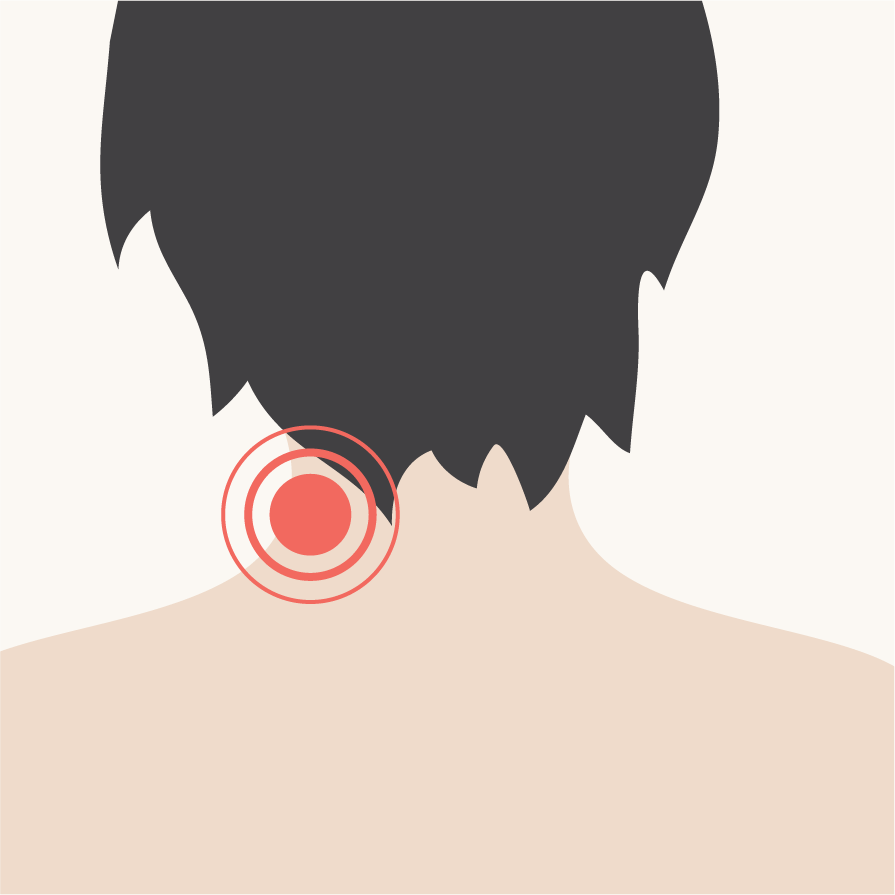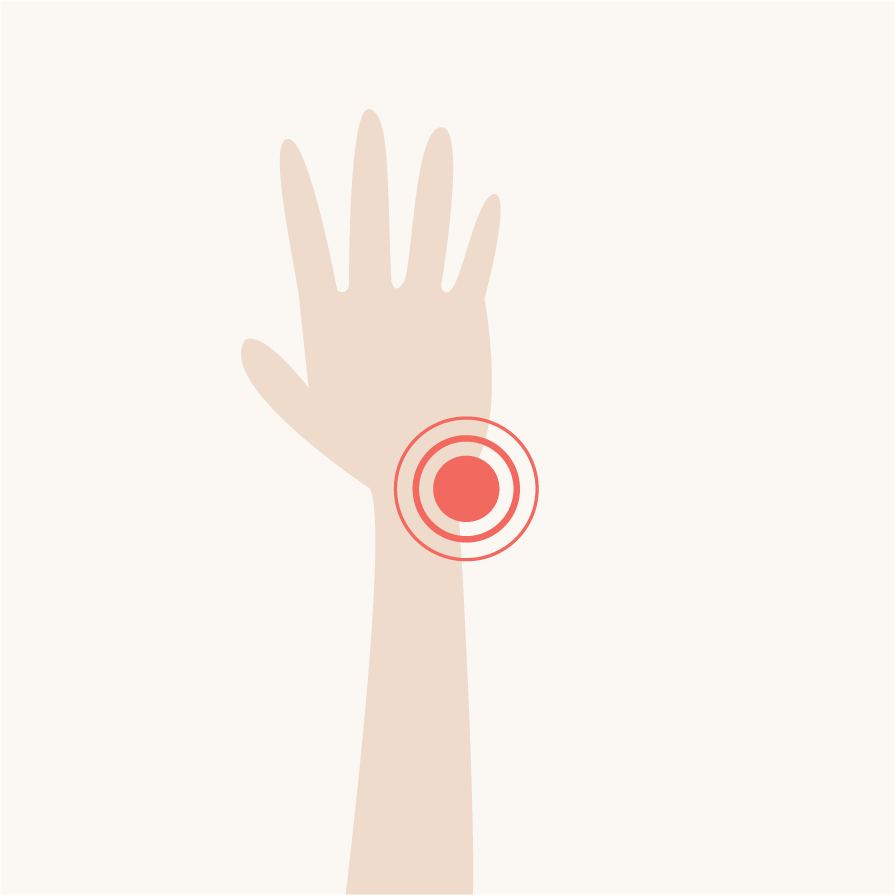I’m In Pain

Hands
Pens and pencils larger in diameter reduce grip force required to write, helping to keep your hands from fatigue.
Lowering the feet on your computer keyboard encourages a more neutral wrist position, allowing for better circulation.

Neck
Move monitors closer, about arm’s length. This will help reduce likelihood of leaning in towards the monitor and will help keep the head balanced over the shoulders.
Raise the top of the monitor to eye level to reduce neck flexion. You should be able to scan your entire screen with your eyes and without moving your head.
NOTE: Not applicable for individuals with progressive lenses.
Reduce unnecessary rotations of the neck by bringing your primary monitor (>70% usage) directly in front of you.
Stay mindful of mobile device use and reduce the amount of time with the chin tucked in towards the chest.

Wrists
Use the larger muscles in your forearm and upper arm to move the mouse instead of relying only on the smaller muscles in the hand and wrist.
Minimize wrist contact with edge and/or top of work surface, as well as palm rest; this will allow for better circulation throughout the wrist, hands, and fingers during active movements and resting periods.

Shoulders
Keep the mouse close to the edge of the keyboard to reduce frequent reaches. If unable to bring the mouse in line with the shoulder, your keyboard may be too wide.
Reduce the lift in your shoulders and reduce static reach by modifying the height of your work surface, to promote relaxed shoulder, elbow, and wrist positions, and by decreasing armrest height and/or width.
Roll your shoulders back when possible. Refrain from leaning in toward monitors, as this rolls the shoulders forward and in.

Eyes
Take frequent visual breaks using the 20/20/20 principle – every 20 minutes, look 20 feet away for 20 seconds.
If possible, relocate the monitors, keyboard, and input devices to a work surface that is 90 degrees (perpendicular) to the window. This will reduce the contrast difference between the monitors and their backgrounds, lessening eye fatigue.
Move monitors closer, approximately an arm’s length, to reduce eye strain.

Back
Adjust your chair so that hips and knees are in a line and thighs are parallel to the floor.
Take chair breaks every 30 minutes. Excessive sitting, even in appropriate postures, can contribute to back discomfort.
Adjust the back of the chair so that it fully supports your back. Refrain from slouching or slumping.
If possible, adjust seat pan depth so that approximately 2-3 fingers fit between the back of the calf and the front of the seat pan. This will offer additional support and will reduce low back strain.












